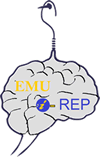JavaScript is disabled for your browser. Some features of this site may not work without it.
| dc.contributor.advisor | Eren, Özgür (Supervisor) | |
| dc.contributor.author | Tuğal, Tennur Demiralp | |
| dc.date.accessioned | 2025-07-15T05:59:03Z | |
| dc.date.available | 2025-07-15T05:59:03Z | |
| dc.date.issued | 2023-09 | |
| dc.date.submitted | 2023-09 | |
| dc.identifier.citation | Tuğal, Tennur Demiralp. (2023). The Effect of Different Cement Types on Pervious Concrete. Thesis (M.S.), Eastern Mediterranean University, Institute of Graduate Studies and Research, Dept. of Civil Engineering, Famagusta: North Cyprus | en_US |
| dc.identifier.uri | http://hdl.handle.net/11129/6405 | |
| dc.description | Master of Science in Civil Engineering. Institute of Graduate Studies and Research. Thesis (M.S.) - Eastern Mediterranean University, Faculty of Engineering, Dept. of Civil Engineering, 2023. Supervisor: Prof. Dr. Özgür Eren. | en_US |
| dc.description.abstract | Pervious concrete (also known as porous concrete, permeable concrete, no fines concrete, and porous pavement) is a high-porosity concrete used in concrete flatwork applications that allows water from precipitation and other sources to pass directly through, reducing runoff and allowing groundwater recharge. Coarse aggregates are used in pervious concrete, with little or no fine particles. The aggregates are then coated with concrete paste, allowing water to flow through the concrete slab. Pervious concrete has typically been utilized in parking lots, low-traffic areas, residential streets, pedestrian pathways, and greenhouses. This study shows the effects of cement types on both fresh and hardened concrete by using different cement types as the only variable in permeable concrete. CEMI and CEMII cement types are discussed for this study. The number of other components used in concrete, water, cement and aggregate is the same in both concretes. The water/cement ratio is the same for both concretes and is 0.34. The diameter and shape of the aggregate used in the concrete is very important for the protection of the hollow structure to be formed in the concrete. Therefore, 14mm limestone aggregate and 5mm sand were used as coarse aggregate. The amount of fine aggregate used is 10% of the coarse aggregate by mass. In this study, the use of fine aggregate was preferred because it was aimed to obtain high compressive strength. Experimental results showed that concrete using CEMI cement in general had superior properties compared to concrete produced using CEMII cement. | en_US |
| dc.description.abstract | ÖZ: Geçirgen beton (gözenekli beton, geçirgen beton, ince taneli olmayan beton ve gözenekli kaplama olarak da bilinir), yağıştan ve diğer kaynaklardan gelen suyun doğrudan geçmesine izin vererek yüzey akışını azaltan ve yeraltı suyunun yeniden şarj edilmesini sağlayan beton düzleştirme uygulamalarında kullanılan yüksek gözenekli bir betondur. İri agregalar, çok az veya hiç ince parçacık içermeyen geçirimli betonda kullanılır. Bu çalışma geçirimli beton içerisinde farklı çimento tiplerini tek değişken olarak kullanarak çimento tiplerinin hem taze hem de sertleşmiş beton üzerindeki etkilerini göstermektedir. Bu çalışma için CEMI ve CEMII çimento tipleri ele alınmaktadır. Beton içerisinde kullanılan diğer bileşenlerin miktarı su, çimento ve agrega her iki beton içinde aynıdır. Su/çimento oranı her iki beton için aynı olup 0.34 dür. Beton içerisinde kullanılan agreganın çapı ve biçimi beton içerisinde oluşturulacak boşluklu yapının korunması için oldukça önemlidir. Bu yüzden kaba agrega olarak 14mm’lik kireç taşı agregası ve 5mm’lik kum kullanılmıştır. Kullanılan ince agreganın miktarı kütlece kaba agreganın 10% si kadardır. Bu çalışmada yüksek basınç dayanımı elde etmek amaçlandığı için ince agrega kullanımı tercih edilmiştir. Deneysel sonuçlar, genel olarak CEMI çimentosu kullanılan betonun CEMII çimento kullanılarak üretilen betona kıyasla daha üstün özelliklere sahip olduğunu gösterdi. | en_US |
| dc.language.iso | eng | en_US |
| dc.publisher | Eastern Mediterranean University (EMU) - Doğu Akdeniz Üniversitesi (DAÜ) | en_US |
| dc.rights | info:eu-repo/semantics/openAccess | en_US |
| dc.subject | Thesis Tez | en_US |
| dc.subject | Civil Engineering Department | en_US |
| dc.subject | Pervious Concrete | en_US |
| dc.subject | Pavements, Porous--Road Pavements | en_US |
| dc.subject | Concrete Pavements--Road Engineering | en_US |
| dc.subject | Asphalt | en_US |
| dc.subject | Pervious Concrete | en_US |
| dc.subject | No Fine Concrete | en_US |
| dc.subject | Permeable Concrete | en_US |
| dc.subject | Cement | en_US |
| dc.subject | Mechanical Properties | en_US |
| dc.subject | Water Permeability | en_US |
| dc.subject | Durability | en_US |
| dc.title | The Effect of Different Cement Types on Pervious Concrete | en_US |
| dc.type | masterThesis | en_US |
| dc.contributor.department | Eastern Mediterranean University, Faculty of Engineering, Dept. of Civil Engineering | en_US |









